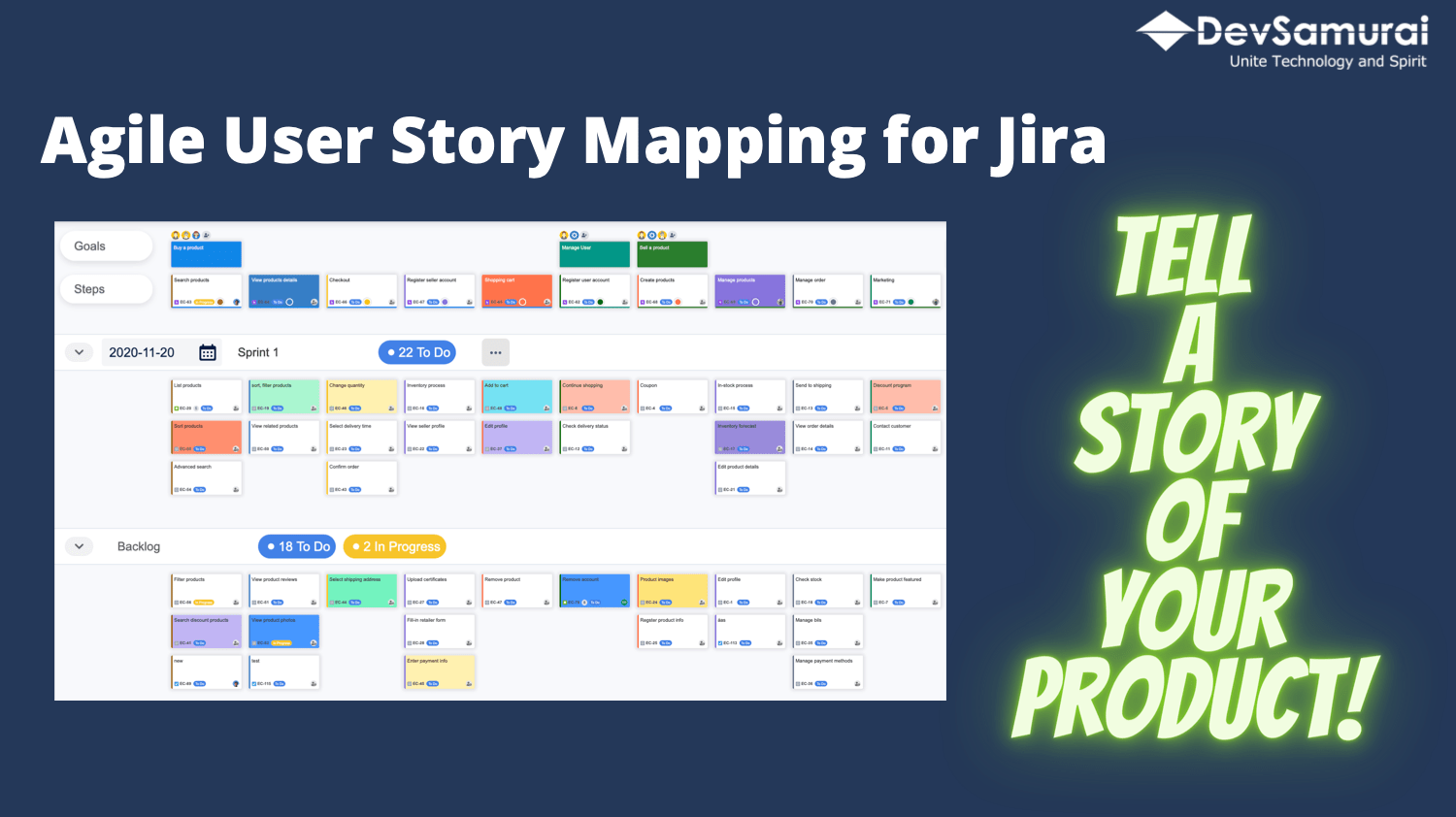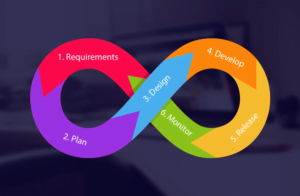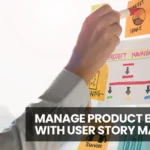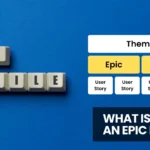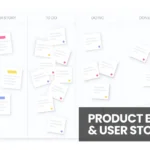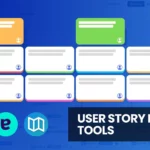Building the product that customers will love is the ultimate goal of a team. Agile is the project management technique that is used extensively in every industry, especially in the IT industry. We have leveraged the benefits of Agile along with the tools like Jira to plan, track, and manage the user stories. All the tools and management techniques are the best fit for an Agile development project. But ever wondered,
Why do Agile products fail to impress customers?
Why do we fail to understand the journey of the project and focus on our task?
What happens when the valuable user stories get skipped during releases?
And what happens when you have a long list of backlogs?
Table of Contents
Why do projects fail to impress customers?
Developers and designers are often narrated,
“You are not your user”
Companies use a manual or a Kanban dashboard to identify the user stories that need completion for each iteration. Sometimes the unfinished relevant user stories are kept in the backlog to reach their conclusive end. This backlog is flat backlogs. In the IT industry, the user stories in the flat backlog are picked by the teams after a certain number of releases. The team working on flat backlogs finds it challenging to identify the value of the user story provided to the customer. The team is unaware of important questions like,
Why are we building this?
What value will it provide to the customers?
What all areas need a retesting?
As the teams fail to understand the value provided by the backlog user stories, the product fails to create a mark on customers.
What is User Story Mapping?
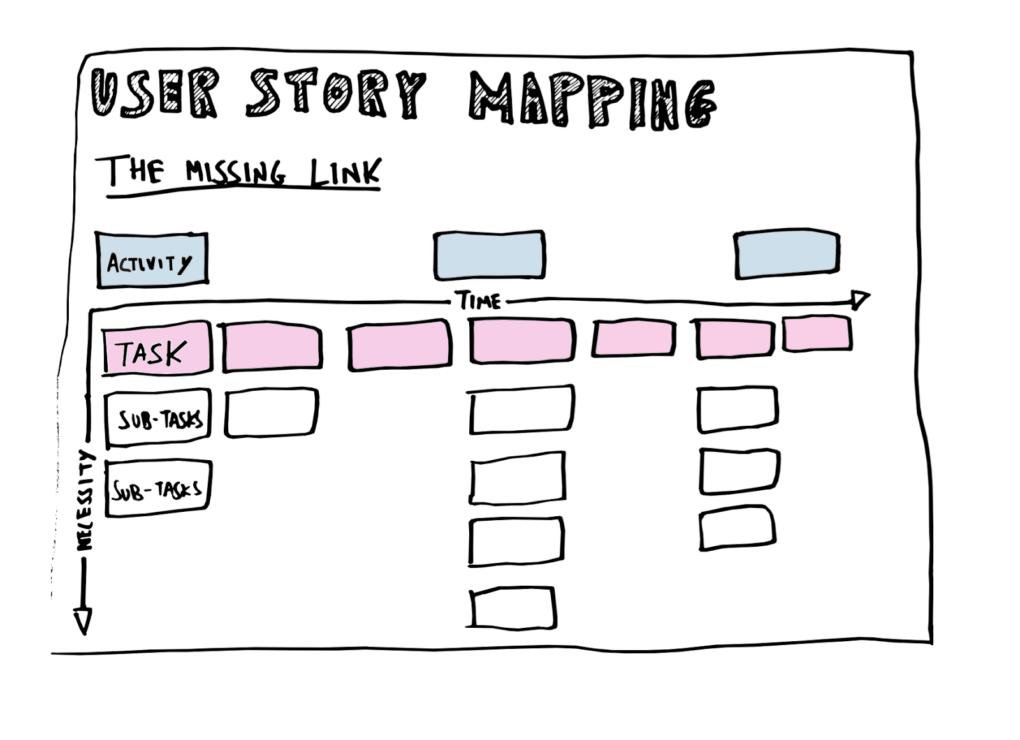
User story mapping is a key to understand the value provided by the user stories in the backlog. User Story mapping a customer-centric approach to arrange user stories and ensure a better understanding of the backlogs by providing a holistic view of the customer’s journey.
A visual exercise for team and managers, user story mapping defines and prioritizes the most valuable backlog stories during the product’s journey. It is an alternative to a flat backlog list that is made using lengthy requirements.
Why use Agile User Story Mapping?
Agile User Story Mapping helps teams to improve their process for building valuable products. The goals, narrative flow as steps along with the user stories for each step is easily defined. It allows you to slice out viable releases and development strategies.
A bigger chunk of the story is divided down into smaller subtasks. The cards are added, split, rewritten, and reorganized.
1. Customer-Centric User Story Mapping:
Agile User Story Mapping displays a view of product backlog from the user’s perspective. Placing the backlogs following the user’s journey gives a better perspective on the value added by these stories. The story mapping correctly fits the backlogs at their respective step. It defines the tasks and sets the deadline for that particular backlog story.
The prioritizing, holistic visualizations, well-sized requirements are focused on user values.
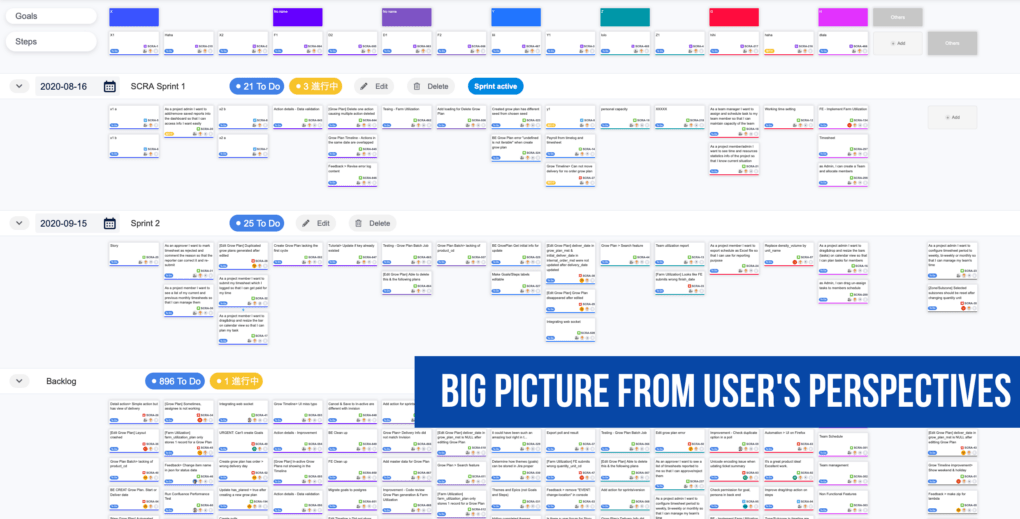
2. Story Telling:
Even before you understand them, your brain is drawn to maps.
– Ken Jennings
Storytelling is a critical point in Story Mapping. It gives an insight into how the user uses a particular backlog feature. As we follow Agile methodologies like Scum or Kanban, mapping of backlogs is ignored during this process.
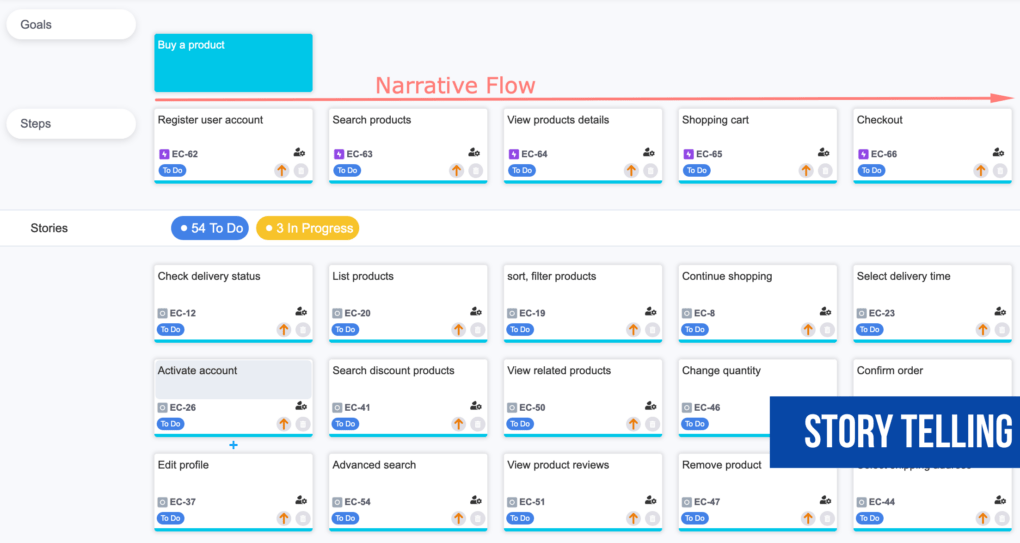
Agile User Story Mapping displays the visual portion of activities and tasks. This helps the team understand the customer’s experience by solely following the process of the dashboard.
3. Flexible Planning Modes:
Manual sticky boards may not have this feature. Story mapping dashboards are flexible enough to display the releases of backlogs with or without swimlanes.
The flexible planning modes allow the users to view exactly what he wants too.
4. Release Planning
Release planning sets the release date in advance. The Agile user story mapping is flexible to add new steps or tasks under any step.
5. Sprint Planning
Sprint planning is a vital part of Agile and Scrum projects. Sprints are a kick-off event to decide the amount of work to be achieved. The entire team gets involved in this event. Adding, deleting, or changing the dates of Sprint is easy with Story Mapping. All the stakeholders are notified of the same information.
6. No Swimlane Mode
Swimlanes are essential in Story Mapping. It slices the sprint planning or releases planning into different views. Agile Story Mapping in Jira gives you the ability to remove the swimlanes. It merges the to-do and in-progress stories of all the sprints and releases.
7. Personas and their Goals
Story Mapping maintains all the stakeholders on one page. Most companies allow their customer to access their project plans on Jira. Using story mapping you can create personas for all the customers. Define their profile with demographics and goals is needed to define their personas.
Persona segments users or team members according to their goals. This is a creative section defining to define goals. The personals goals guide the product decisions in terms of UX designs and product features.
8. Highlight Search Feature:
The bigger the team, the larger is the number of backlog stories. Searching is a common feature of all the products. You can search user stories or task then use the highlighted search features. The searched cards are highlighted to make them visible.
Conclusion:
Creating products that are appreciated by the customer is the dream of every project manager. Software companies have evolved their project management techniques to make it flexible, iterative with a time-specific approach. Agile development is used extensively with project management tools like Jira. But still, companies lack the technique to create projects that are valued by customers.
The Agile User Story Mapping fills the gap between the customers and project team members. The plugin available on Atlassian Marketplace is the best visual board that allows all the team members to manage the product backlogs. It’s not a tool but a holistic approach to customers’ stories mapping.

